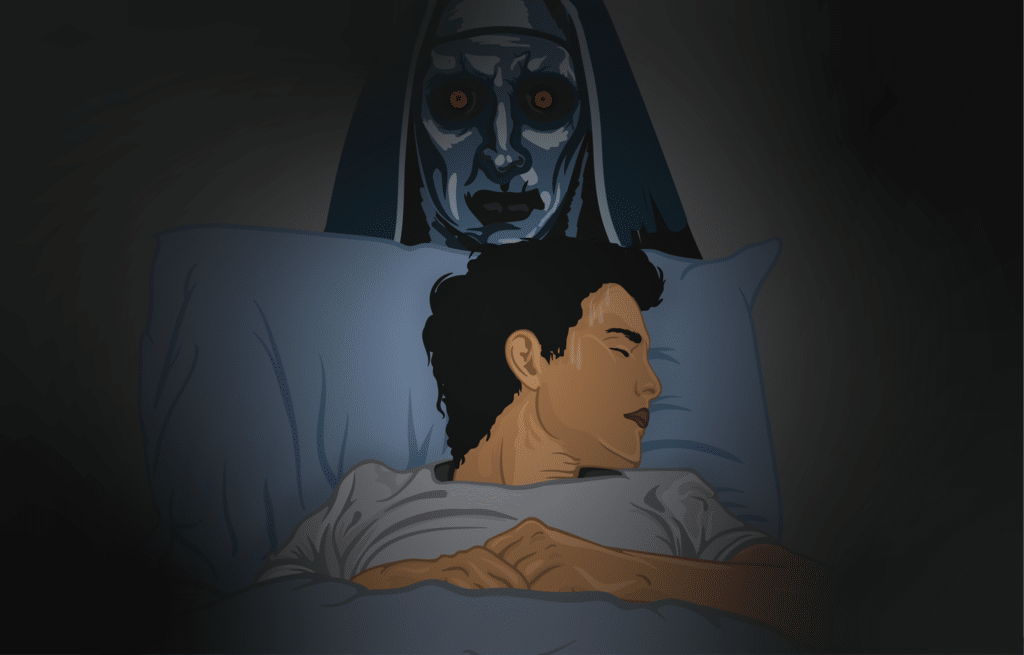Night terrors, also known as sleep terrors, are a type of parasomnia that can cause intense fear and distress during sleep. Abbreviated as NTs in medical contexts, they are more common in children but can affect adults as well. Understanding the causes, symptoms, and management strategies for night terrors is essential for improving sleep quality and overall well-being.

What Are Night Terrors?
Night terrors are episodes of extreme fear, screaming, and flailing while still asleep. Unlike nightmares, which occur during the rapid eye movement (REM) phase of sleep, night terrors happen during non-REM sleep, typically in the first few hours after falling asleep. These episodes can last from a few seconds to several minutes and often leave the person feeling disoriented upon waking.
Difference Between Nightmares and Night Terrors
- Nightmares: Occur during REM sleep, and the person usually remembers the dream upon waking.
- Night Terrors: Occur during non-REM sleep, and the person often has no memory of the episode afterward.
Causes of Night Terrors
The exact cause of night terrors is not fully understood, but several factors may contribute to their occurrence. These include genetic predisposition, environmental triggers, and underlying health conditions.
Genetic Factors
Research suggests that night terrors may run in families. If a close family member experiences night terrors, there is an increased likelihood that other members may also be affected. This indicates a possible genetic component to the condition.
Sleep Deprivation
Lack of adequate sleep can trigger night terrors. When the body is deprived of restorative sleep, it becomes more susceptible to disruptions in the sleep cycle, leading to episodes of night terrors.
Stress and Anxiety
Emotional stress and anxiety can significantly impact sleep patterns. High levels of stress may increase the frequency and intensity of night terrors, as the mind struggles to process overwhelming emotions during sleep.
Fever or Illness
In children, night terrors are often associated with fever or illness. The body’s response to infection can disrupt normal sleep patterns, making night terrors more likely to occur.
Medications and Substances
Certain medications, particularly those affecting the central nervous system, can increase the risk of night terrors. Additionally, alcohol and recreational drug use may also contribute to these episodes.
Symptoms of Night Terrors
Recognizing the symptoms of night terrors is crucial for identifying and addressing the issue. While the person experiencing night terrors may not remember the episode, others around them often witness the following signs:
Intense Fear and Screaming
During a night terror episode, the individual may scream, shout, or cry out in fear. Their expressions and body language often reflect extreme distress, even though they are not fully awake.
Rapid Heartbeat and Sweating
Physical symptoms such as a racing heart, heavy breathing, and excessive sweating are common during night terrors. These signs indicate the body’s heightened state of arousal during the episode.
Difficulty Waking Up
Unlike nightmares, where the person can be easily awakened, individuals experiencing night terrors are often difficult to rouse. They may appear confused or unresponsive if someone tries to wake them.
No Memory of the Episode
After the episode ends, the person typically has no recollection of what happened. They may feel disoriented or groggy but have no memory of the fear or events that occurred during the night terror.
Management and Treatment of Night Terrors
While night terrors are generally not harmful, they can disrupt sleep and cause distress for both the individual and their family. Fortunately, there are several strategies to manage and reduce the frequency of these episodes.
Improving Sleep Hygiene
Establishing a consistent sleep routine and creating a relaxing bedtime environment can help prevent night terrors. This includes going to bed at the same time each night, avoiding caffeine and heavy meals before bed, and ensuring the bedroom is dark, quiet, and comfortable.
Addressing Underlying Stress
Managing stress through relaxation techniques such as deep breathing, meditation, or yoga can reduce the likelihood of night terrors. Addressing sources of emotional stress in daily life may also help improve sleep quality.
Reducing Sleep Disruptions
Avoiding activities that disrupt sleep, such as late-night screen time or irregular sleep schedules, can minimize the risk of night terrors. Creating a calming pre-sleep routine, such as reading or listening to soothing music, can signal the body that it is time to rest.
Wake Therapy
For children who experience frequent night terrors, a technique called “scheduled awakenings” may be effective. This involves gently waking the child about 15 to 30 minutes before the typical time of the night terror episode. Over time, this can help reset the sleep cycle and reduce the occurrence of night terrors.
Consulting a Healthcare Professional
If night terrors persist despite lifestyle changes, it may be helpful to consult a healthcare professional. A doctor can evaluate for underlying conditions such as sleep apnea, restless leg syndrome, or other sleep disorders that may contribute to night terrors. In some cases, therapy or medication may be recommended to address the issue.
When to Seek Help
While occasional night terrors are usually not a cause for concern, certain situations warrant seeking professional help. These include:
- Frequent episodes that interfere with sleep or daily functioning.
- Injuries to oneself or others during night terror episodes.
- Persistent daytime fatigue or difficulty concentrating due to disrupted sleep.
- Signs of an underlying medical or psychological condition contributing to night terrors.
Support for Families
For families dealing with a loved one who experiences night terrors, understanding and patience are key. It is important to remember that the person is not consciously aware of their actions during an episode and cannot control their behavior. Providing reassurance and maintaining a calm environment can help reduce anxiety and promote better sleep for everyone involved.
Tips for Family Members
- Avoid trying to wake the person during an episode, as this may increase confusion or agitation.
- Ensure the sleeping area is safe by removing objects that could cause injury during an episode.
- Encourage open communication about sleep issues and work together to implement healthy sleep habits.
Final Thoughts on Night Terrors
Night terrors can be unsettling, but with proper understanding and management, their impact can be minimized. By addressing potential triggers, improving sleep hygiene, and seeking professional guidance when needed, individuals and families can work toward achieving restful and uninterrupted sleep.





